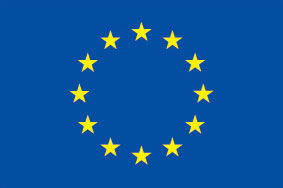As of early July 2025, China’s pork market continues to experience low prices as a consequence of an oversupplied environment. Expectations that prices would start recovering as 2025 advances haven’t yet come to reality. Since the beginning of the year, live hog prices have remained lower than in 2024, with the national average standing at 14.98 RMB per kg (approximately €4.15/kg) as of July 8 [1].
Official data shows that the number of hogs slaughtered by large-scale enterprises rose by 12.8% year-on-year in the January–May period [2]. At the same time, the breeding sow inventory remains slightly above the upper limit of the government’s target range, indicating that the sector has not yet completed its main goal of reducing total capacity. There is still hope that prices will rebound for the second part of the year, and farms will start to become more profitable.
China is addressing this issue, and on April 7, the State Council released the “Plan for Accelerating the Construction of a Strong Agricultural Country (2024-2035)” proposing that “by 2035, significant achievements will be made in building a strong agricultural country.” The plan refers to the need to develop high quality pig industry and accelerate large-scale transformation. This works out by financially supporting family farms, cooperatives and new types of business entities and encouraging joint operations to promote centralised farming. An example would be the vertically integrated project, like China’s own breed pigs cultivation project in Fujian [3] whereas managers express: “We’re not chasing the biggest herd. We’re building the most robust one”. In other words, China’s pig industry is not about quantity anymore, but productivity.
Meanwhile, the imported pork has started 2025 in positive. From January to May, China imported a total of 450,000 tons of pork, up 5.2% compared to the same period last year [4]. This increase is largely attributed to concerns over possible tariff hikes, triggering a wave of restocking. Despite cautious downstream demand, frozen warehouse utilization rates have remained at historically low levels since last year—below the five-year average—providing a degree of price stability for imported pork products.
In the first quarter of 2025, Russia is said to have exponentially increased its pork exports globally (72% more than the previous year) [5]. This growth is mostly caused by the demand in China, official sources have indicated. According to Agroexport [6], value has grown 130 times, reaching an estimated €27 million.
Although the U.S. remains the top exporter in China for offal, the EU exports more frozen pork. China extended the anti-dumping investigation until December 2025, which can be seen as a change of attitude towards Europe vs the trade instability that arrives from the new Administration in the U.S. The EU recorded a significant increase if compared with 2024. Spain exported 296,467 tons, a 26.8% of total exports [7]. Furthermore, a recent visit from the Spanish prime minister to China allowed the signature of a new agricultural protocol between the 2 countries [8]. Now Spain can export pork tripe for the next five years. Apart from it, the agreement also added 14 processing plants to the approved export list. These developments suggest that China may be considering a more selective or moderated stance in its trade policies toward the EU.
Campaigns like EU The Smart Choice can help to convert this growth in larger export numbers into the Chinese market.
[1] MOA, 农业农村部生猪专题
[2] MOA, 农业农村部生猪专题
[3] https://www.agripost.cn/2025/05/22/chinas-pig-breeding-evolution-shanlixiang-huiyings-technical-roots-and-premium-ambitions/#:~:text=Fujian-based%20Shanlixiang%20Huiying%20is%20reshaping%20China%E2%80%99s%20pig%20farming,%E2%80%9CAmerican-American-Canadian%E2%80%9D%20cross%E2%80%94and%20partnerships%20with%20global%20agri%20giant%20Cargill.
[4] MOA, 农业农村部生猪专题
[5] https://www.pigprogress.net/market-trends-analysis-the-industrymarkets/russian-pork-exports-grow-in-q1-thanks-to-china/?utm_source=Maileon&utm_medium=email&utm_campaign=pp_all_traffic_con_non_base-newsletter_email_oth_regulier-2025-05-28&utm_content=https%3A%2F%2Fwww.pigprogress.net%2Fmarket-trends-analysis-the-industrymarkets%2Frussian-pork-exports-grow-in-q1-thanks-to-china%2F&mlnt=fCnQc7WqU8E9krAW0q5gFY37eLVQk0t3uih9nxm-EwabcJwEqdC88g&mlnm=EzzcGFTtY98&mlnl=m7D2lg04S-w&mlnc=ZPCp7HrZTz120VKr6v-F7g&mlnch=gl7nLsN22FzBglBiyJbt3A&mlnmsg=S6mNL61T3pQPc-UZ0rHaWg
[6] https://agroexportglobal.ltd/
[7] https://www.3tres3.com/ultima-hora/la-ue-exporta-un-3-1%E2%80%AF-mas-de-porcino-en-el-primer-trimestre-de-2025_52175/?utm_source=newsletters333&utm_medium=email&utm_campaign=%C3%9Altima+hora-19803&xemail=aWRtPTE5ODAzJmlkdT0yMzU0MDYmdD03ZmI3MWY1ZmE2NGYwNTM2OGIwMGU1Mjk3MzBkMWY2Ng%3D%3D
[8] https://www.mercatcarnibcn.com/ampliada-la-lista-de-los-productos-de-porcino-que-se-podran-exportar-a-china-con-la-firma-de-un-protocolo-para-los-estomagos-de-cerdo/




